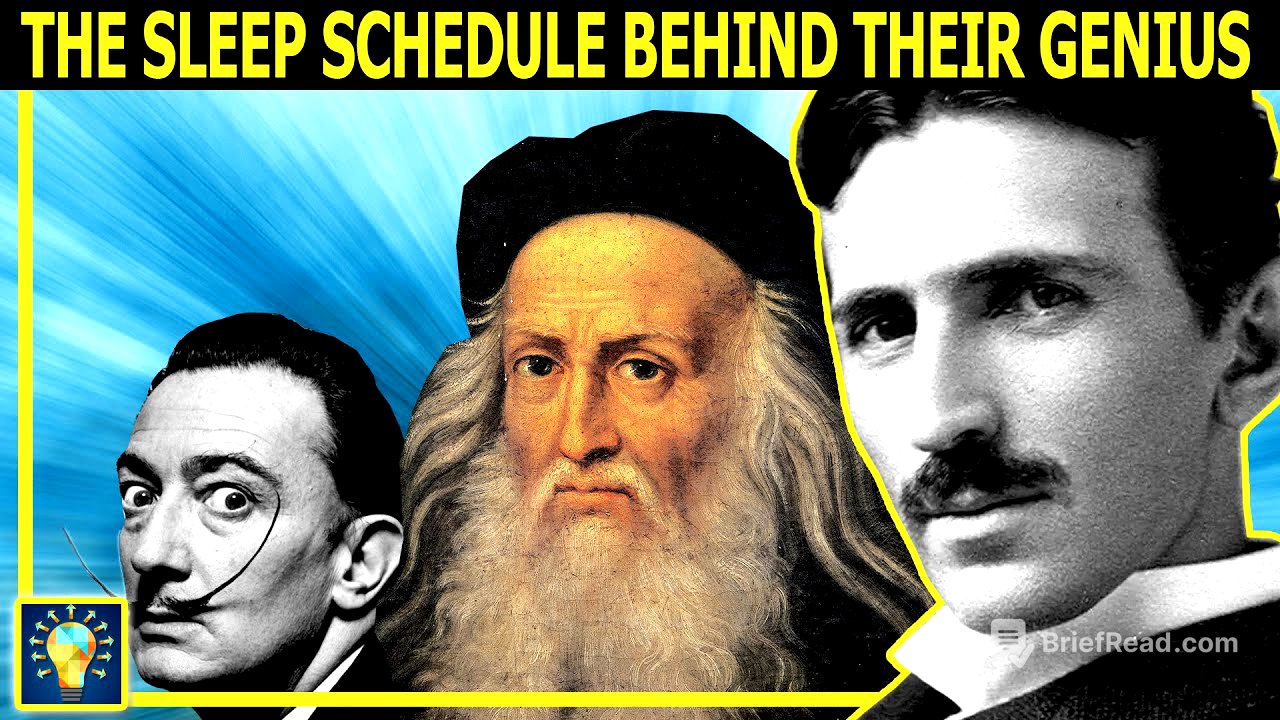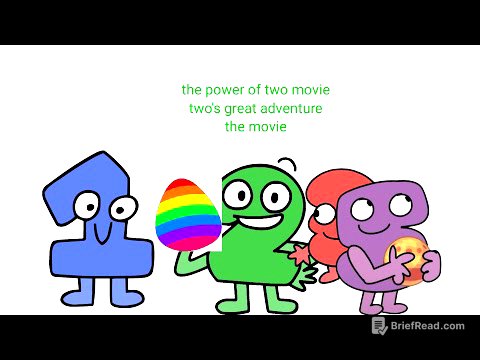TLDR;
This video explores the extreme daily routines of Nikola Tesla and Leonardo da Vinci, focusing on their unusual sleep schedules and how it may have contributed to their genius. It discusses polyphasic sleep patterns, specifically the "uberman" schedule, and the hypnagogic state, a transitional phase between wakefulness and sleep, which can boost creativity. The video also touches on other historical figures who utilized similar techniques to enhance their creative processes.
- Nikola Tesla and Leonardo da Vinci followed polyphasic sleep patterns, sleeping no more than two hours a day.
- The "uberman" sleep schedule involves taking 20-minute naps every four hours.
- Hypnagogia, the state between wakefulness and sleep, can unlock creative thoughts and hallucinations.
Introduction [0:00]
The video introduces the idea of exploring the extreme daily routines of historical geniuses, specifically Nikola Tesla and Leonardo da Vinci, to uncover potential sources of their creativity. It notes that many of their inventions were either never created or lost to time, prompting an investigation into their lifestyles for clues to their genius. The video aims to explore the fine line between creativity and insanity.
Unusual Sleep Schedules [1:05]
Both Nikola Tesla and Leonardo da Vinci shared a significant aspect of their daily routine: their sleep schedules, or rather, their lack of sleep. They both claimed to rarely sleep longer than two hours each day. Most people follow a monophasic sleep pattern, with one six-to-eight-hour sleep phase, while Tesla and Da Vinci followed a polyphasic sleep pattern, having many sleep periods spread throughout the day.
The Uberman Sleep Schedule [1:55]
Tesla and Da Vinci dedicated themselves to the "uberman" sleep schedule, the most extreme variation of polyphasic sleep patterns. In this schedule, a person takes a 20-minute nap every four hours, resulting in nearly 22 productive hours each day, compared to the typical 16 hours with an eight-hour monophasic sleep schedule. This method may have contributed to their genius by providing more hours in the day and facilitating access to a creative state.
Hypnagogia and Creativity [2:42]
Many influential figures, including Isaac Newton, Aristotle, Einstein, and Edison, sought hypnagogia, the transitional state between wakefulness and sleep, to boost their creativity. This state, occurring as the brain slips into unconsciousness, can produce creative thoughts, dreams, and hallucinations. Salvador Dali used a technique involving a metal key to awaken himself from this state, capturing the lucid associations generated by his brain.
The Science Behind Uberman and Hypnagogia [3:45]
The brain requires REM sleep to function correctly. Chronic sleep deprivation, as experienced with the uberman sleep schedule, causes the brain to seek REM sleep whenever possible. This can lead to the brain skipping deep sleep and going straight to REM during short naps, or even while awake, resulting in constant hypnagogia. This state may have allowed Tesla and Da Vinci to see problems from different perspectives, enhancing their creative ideation.
Trying the Uberman Method [4:29]
The video warns that attempting the uberman sleep schedule is a rough process, typically requiring one to stay awake for at least 48 hours before shifting to 20-minute naps every four hours.









